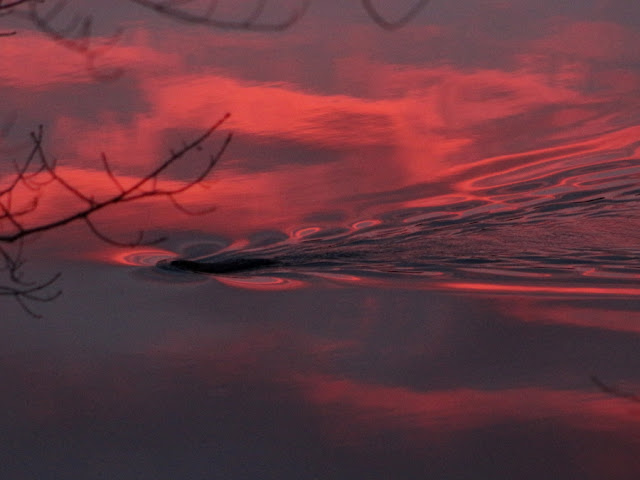 |
| A palm warbler on its way north |
The palm warbler won't be here for long - the maps indicate that its breeding range is beyond even the northern tip of New Hampshire. I was fortunate enough just to catch one as it stopped to enjoy some time in the Lakes Region.
The pine warbler on the other hand will spend the summer here. Because it lives its life high up in the branches of white pine trees I wasn't able to see one other than some faint silhouettes dancing around against the bright sky. But there were many and they were singing constantly, so with the sound recordings on the Merlin app I was able to identify them. (The Cornell Ornithology Lab Merlin App can be downloaded on your smart phone so you can take it with you in the field. It has an identification feature where you answer three simple questions, and then it gives you a list of possible birds based on your location.)
Other summer birds are returning as well; I saw an osprey and two great blue herons on a paddle around Lake Wicwas.
 |
| The osprey have returned |
I took advantage of the high spring water and lack of lily pads to paddle up to the beaver dam that holds back Blake Brook where it enters Lake Wicwas.
 |
| The beaver dam holding back Blake Brook |
There was visible current flowing through the dam and a delightful trickling sound that the beavers will soon put and end to. You can see more of the dam and hear the water in this short video I took while I was there. You'll see one spot in particular where water was breaking through the dam. The beavers won't let that go on for long!
On this same trip I finally got positive confirmation that last year's male loon has returned.
 |
| The male loon was banded last July - it has a white band with a black dot. |
I didn't get to see the female's bands, but Tom Crane has confirmed the banded female is here as well, so our resident pair has definitely returned. Both loons gave me a nice long show as they were doing their mid-morning preening and on one good belly roll I got a chance to observe the results of their work.
Look at how the water balls up on their feathers. During preening they take oil from a gland near their tail and spread it onto their feathers to repel water and keep them dry and warm - it's like waxing your car! They clearly weren't bothered by me using a telephoto lens from a long distance away.
A few more members have joined the spring wildflower guild, including the trailing arbutus (sometimes called mayflower).
 |
| Trailing Arbutus (Epigaea repens) |
I always request not picking wildflowers, but once in your life, when you find a large healthy patch of arbutus, you should take one of these tiny flowers and roll it between your finger to experience the beautiful sweet perfume it uses to lure in the pollinators - it's a delight to all the senses.
This time of year, to close out each spring day, the beavers come out just at sunset to inspect their domain and collect building materials to repair those holes in their dams.
 |
| The lake yields to a beaver as it makes its evening rounds. |
Their work day is just beginning.

No comments:
Post a Comment